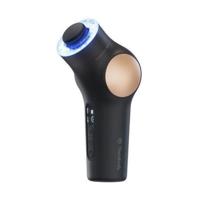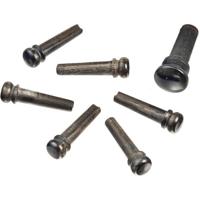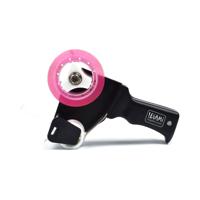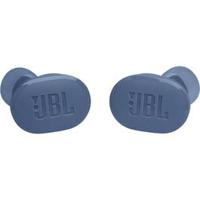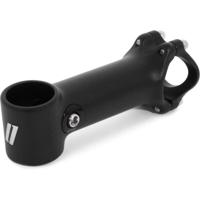About Stems
Is there anything that you really need to think of before buying bicycle stems? It is just a small piece of metal that connects the handlebar to the fork. So, wouldn’t any stem do just fine? Well, stems play a vital role in handling and riding comfort. If your bicycle has an ill-fitting stem, it can seriously mess with your riding comfort.
The primary job of bicycle stem is to connect the handlebars to the fork steerer. But they also influence a lot of other factors. If you feel like you’re riding position is not comfortable, the stem is the first thing that you should look at—followed by handlebars and seats. A bad riding position is bad for your back and the neck. Also, it will make it impossible for you to take your bike for long-distance rides. But this also depends on what you want to do with the bike. A racer needs a different configuration as compared to that of a commuter. It is important to have a basic understanding of the stems before you buy one. This article will tell you about the types of stems out there and how to pick the right one for you.
Different types of bicycle stems and their functions
You know that not all bikes are the same. Similarly, depending on how they are used, there are a few different types of stems as well. Moreover, apart from serving as the functional part of a bike, you can also use stems to improve the aesthetics of the bike. Here is a guide to the stems you will need for each type of bike and your riding style. Having an idea about different types of stems will help you a lot. You will not look at them the same ever again after reading this. In this article, you will also find some useful tips that you can follow while shopping for them online.
Road bike stem
When it comes to road bike stems, the main focus is on achieving a comfortable riding position. Road bike stems are shorter to provide a more upright riding position. Although an upright riding position may increase the drag, this is less felt at normal street speeds. But for performance bikers, there are stems that are longer than 120mm. Aluminium alloy is the most popular material for road bike stems. But again, racers prefer a much more expensive and lighter in weight carbon fibre stems. An ideal road bike stem should be adjustable as well.
Mountain bike stem
Handling is the major factor to consider when you are choosing a mountain bike stem. Because a handlebar that sits close to the fork of the bike provides better control. They have a faster response than a longer stem. But the downside of a short stem is that it becomes difficult to stand up and pedal. Therefore, most mountain bikers opt for a mid-length stem that has a balance between handling and pedal efficiency. Compared to a road bike, mountain bike stems have more rise. There are also a few specialised stems like the downhill stem and trail stem as well.
BMX stems
The stem needs to be very strong in order to withstand all the heavy impacts that a BMX rider would put on it. You might have seen the jaw-dropping tricks that BMX riders perform. All those tricks would be impossible without precise handling. BMX stems do not aim for long riding comfort. Instead, they are optimised for better handling and sturdiness. The bulk of the BMX athletes prefer lightweight aluminium alloy. Two of the most common aluminium alloys are 6061 and 7075. In order to achieve the maximum strength, BMX stems are machined rather than moulded.
Quill stems
These were the only type of bicycle stem you would find back in the day. Despite all the technological advancement in technology, quill stems have survived the test of time. There are still mountain bikers that prefer quill stems over the modern MTB stems. Because of their cheap cost, you will find them on the cheaper road bikes. But one downside of a quill stem is the lack of adjustments. You cannot install a quill stem on any bike either. They need forks with threads in them. If you do not have those and still insist on using quill stems, you can buy a quill stem adaptor.
Adjustable bicycle stem
If you are one of those people who don’t want to be confined to a single type of stem, an adjustable stem is a perfect choice. They are easy to adjust depending on how you want it to be. You can adjust both the length and rise of the stem. Another benefit of the adjustable stem is to use in kids’ bikes. Because kids grow fast, their bike handles become too short for them within a year. But using an adjustable stem, you can fix the handlebars in a position that is comfortable for your kid. What makes this type of stems unpopular for sportbikes is that there are too many weak points in them that are easy to break.
Tips on how to buy Bicycle Stem
Some people might look at the handlebar stems and think that they are not any significant. But get the wrong stem, and no matter how polished your riding skills are, you will struggle to keep the bike moving in a straight line. Here are a few tips that you can follow when you are shopping for bike stems.
- Stem length – This is one of the factors that influence your riding position. If the stem is too long, you will have to reach our arms out further and will have to bend forward to grab the handlebar. Longer handlebars are better for performance cycling while shorter are better for commuting.
- Stem rise – Rise of a stem can be either positive or negative. If the handlebar is higher than the fork tip, the rise is positive, and otherwise, it is negative. If the rise is higher, the riding position will be upright. A positive angle of 10 degrees is common for stems.
- Clamp diameter – In order for you to install a stem on the fork, the clamp diameter of the stem and the diameter of the fork tube should be the same. Even if they are not exactly the same, they both should be in the same ballpark.
- Stem material – The strength and durability of the stem depends a lot on the material. For regular street use, an aluminium alloy stem will be enough. But for high impact sports, you need a stronger and lightweight stem made of titanium or carbon fibre.
To install or take off a stem, you will need a screwdriver with Torx tips. Some brands even use their proprietary screws. If you are a DIYer, make sure that you have the right tools as well. You will be able to find them on Shops.ae. Among the brands you can consider when shopping on our product search engine are Lixada, Kickstand, Decdeal, Basso, and Renthal.
Question & Answer
How to adjust bicycle stem height?
If you feel that the handling of your bike does not feel quite right, you can try adjusting the stem. In the case of most stems, the only thing you can adjust is the height. You can either lower it or raise it. To do this, you have to remove the screw on the top cap. You will need a Torx screwdriver to do that. To adjust the height of the handlebars, you will have to change the position of spacers on the stem. If you add more spacers beneath the handlebars, the stem height increases. If you want to lower the handlebars, you have to move the spacers from beneath the handlebars to the top of it.
What are stem risers?
Stem risers are the answer to handlebars that are too low. They are simply an extension to the wheel forks. So instead of fixing the stem directly on top of the fork, you use a stem riser in between both of them. They are effective at doing what they are supposed to do – to increase the height of the handlebars. But the added joints make the handles weaker. If you have a habit of applying too much force on the handlebars, you will often hear the joints creaking. An alternative solution to using stem risers is to use a taller bicycle stem itself.
How is a bicycle stem measured?
You need six measurements to completely define the dimensions of a bicycle stem. The height of the stem is the vertical height at where it meets the cycle forks. The reach is the horizontal distance between the point that is nearest to the rider and the point on the stem that is the farthest away from the rider. The ‘extension’ is also the distance between the same two points. But instead of measuring it horizontally, you have to measure it along the stem length to get the ‘extension’. ‘Rise’ is the difference in height increase due to the stem, i.e., the difference between the steer-clamp and the position of the handlebar.

